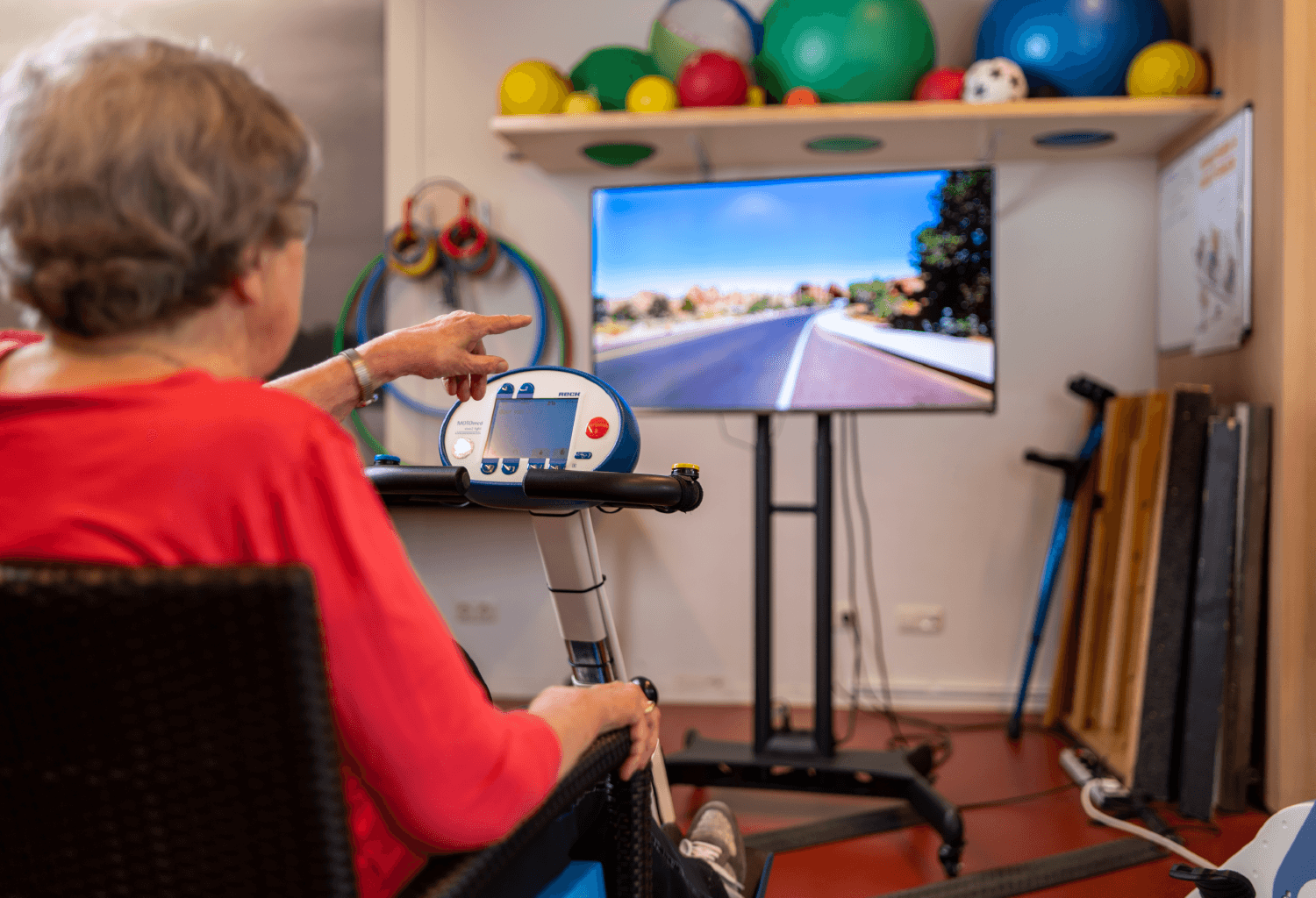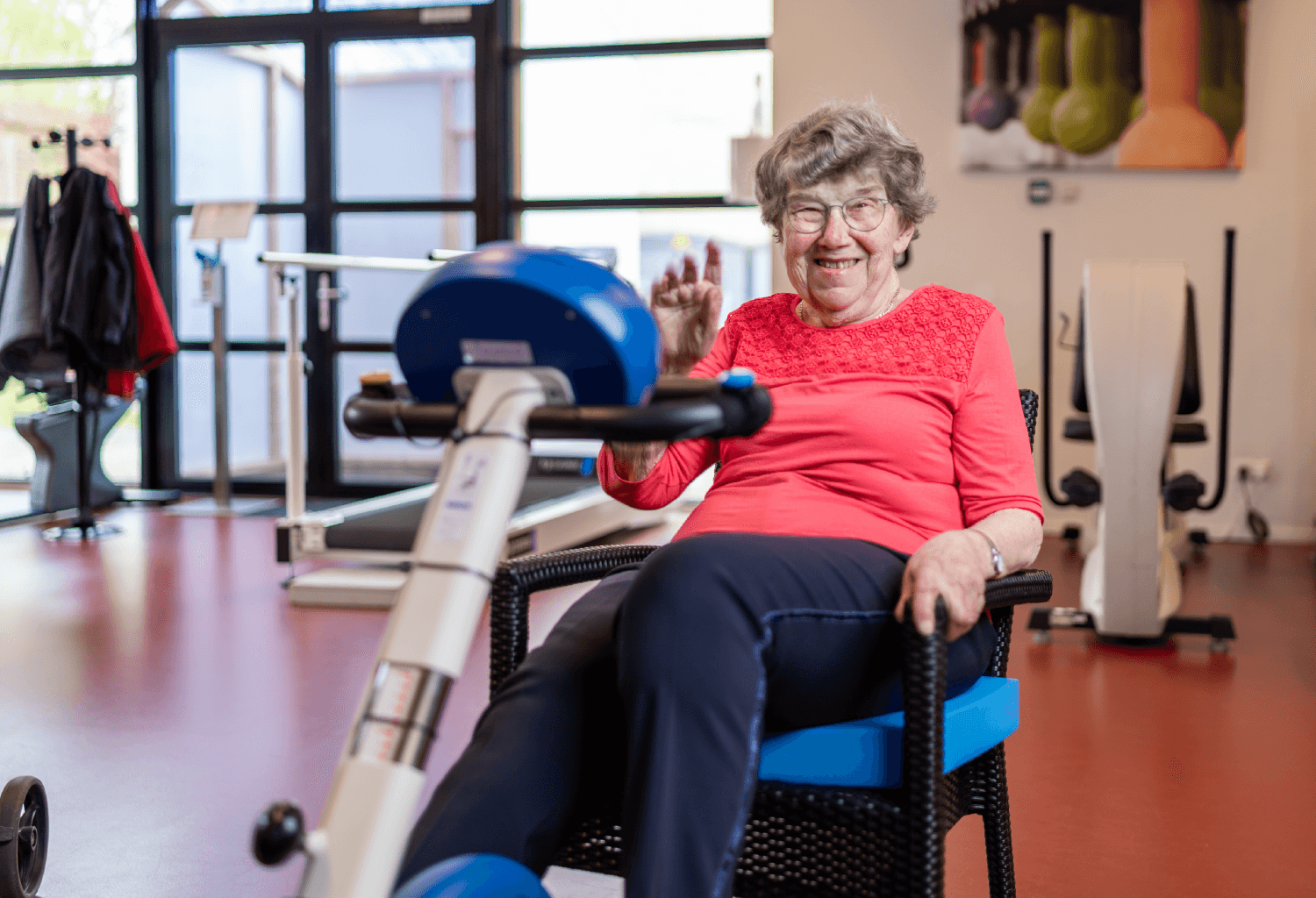'Bike Labyrinth makes rehab slightly easier and more fun.'
Geriatric rehabilitation care practitioners pull out all the stops to make rehabilitation easier and more fun. Anneloes Houwen, a physical therapist at Haren's De Dilgt Nursing Home says that Bike Laybrinth helps make that happen.
Spotting giraffes and zebras on safari, paddle boating along Amsterdam's canals, or going for a spin through Tokyo’s crowded streets – in De Dilgt Nursing Home's Geriatric Rehabilitation Care Wing, that kind of outing is yesterday's news. Most clients are elderly, and either live at the home or are there for a temporary rehab stay. And yet astonishingly, they usually travel quite a bit... Virtually, that is, courtesy of Bike Labyrinth’s interactive bike tours. Physical therapist Anneloes Houwen told us that the two bikes in the exercise room hooked up to the Bike Labyrinth screen are actually always occupied. For fifteen years, she's been assisting people who generally are no longer able to bike outside independently, even though exercise is especially important for them. “Getting enough exercise helps keep you in shape, and it promotes mental and physical recovery,” she says. Cycling is a key element in her treatments, but stick somebody on a bike facing a white wall, and they'll be ready to get off before they start. “However, cycling through a metropolis or even just through your old familiar surroundings might make you more likely to reconsider... ‘Hmm... I'll just take a quick look around that bend too.’ Bike Labyrinth makes it easier to finish your cycling time,” says Anneloes. Choices en route and lifelike ambient sounds while cycling make for a realistic biking experience. Pedaling harder makes you go faster, and users decide which way to go at intersections. Anneloes: “It’s an authentic experience, and that's motivating.”
Recall
Of the six hundred true-to-life routes, Groningen remains the most popular at Haren so far. “It's nearby, and many people have fond memories of the city. But some people go for someplace just across the border because they used to live there, have been there on vacation, or recall certain street names or buildings,” says Anneloes. Many people in geriatric rehabilitation care deal with incipient dementia or memory problems. And in addition to encouraging exercise, Bike Labyrinth also promotes cognitive ability. That's also how it works for 92-year-old Jan van der Woude, who enjoys using Bike Labyrinth while recovering from surgery. He often chooses one of the eighteen Spanish routes because his daughter lives in Spain. “Although sometimes I’ll go for a random destination too. I've traveled halfway around the world in my lifetime, and I've been to so many places. Sometimes I bike somewhere and think to myself, ‘Yep, I know this place,’ he says. He gets on the bike twice a week for a virtual ride. Chuckling, he says: “Ideally, I'd love to do it even more frequently; however, it goes without saying that I'm not the only one who wants to ride. Bike Labyrinth is popular.”
“Bike Labyrinth makes you more likely to think: ‘I'll just cycle around the block one more time.”
Easier and more fun
Anneloes says that Bike Labyrinth regularly leads to entertaining conversations. “You get to know a little more about each other, which makes the job just a little more cheerful. And that's a good thing, too, because people are here to recover; it’s not something anyone volunteers to do for fun. The world can sometimes feel incredibly small at rehabilitation centers; just going out for a while is frequently no longer an option. But Bike Labyrinth manages to make you feel like you’re someplace different for a while. That's especially true if you can pick a nice sunny destination when it's gray and dreary here. Bike Labyrinth makes rehab a little easier and more fun. Obviously, that's something I welcome with open arms as a professional.”
2516 BE The Hague, NL
info@bikelabyrinth.com
+3170 737 1152
By using this website you agree to our privacy policy.







